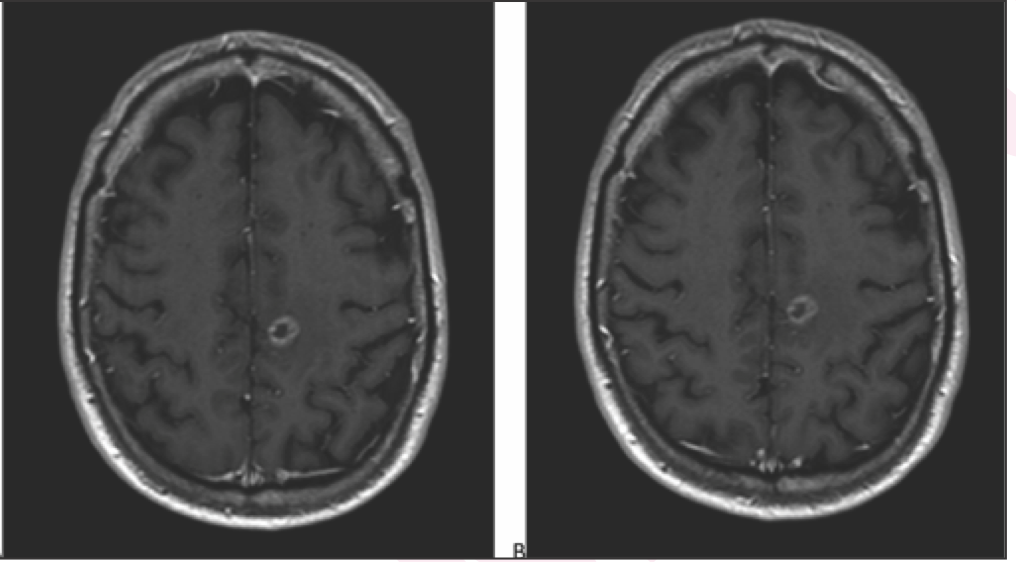Lower Gadobutrol Dose Effective for Contrast-Enhanced Brain MRI
Findings could lead to changes in treatment decisions.
A lower dose of gadobutrol performs equally as well with contrast-enhanced brain MRI when compared to a full standard dose of gadoterate, according to new research.
In a study published June 16 in the American Journal of Roentgenology, investigators from Germany’s University Medical School of Saarland shared results that showed reduced gadobutrol dose by one-fourth could change treatment decisions for some patients.
“A 25-percent reduced gadobutrol dose demonstrated non-inferior efficacy versus standard dose gadoterate for contrast-enhanced brain MRI,” said corresponding author Jan Endrikat, professor of medicine, “warranting particular consideration in patients undergoing multiple contrast-enhanced examinations.”
61-year-old man with left hemispheric brain metastasis from lung cancer. Axial T1-weighted MR images obtained using (A) standard-dose gadoterate and (B) reduced-dose gadobutrol 4 days later.
Credit: American Journal of Roentgenology

To determine the impact of a lower dose, Endrikat’s team conducted an international, prospective, multi-center, open-label, crossover trial called LEADER-75. They enrolled 141 patients – 78 men and 63 women who averaged age 58.5. All patients either had or were suspected of central nervous system pathology, and they underwent contrast-enhanced brain MRI with the standard gadoterate dose – 0.1 mmol/kg.
Patients who had an enhancing lesion emerge on the first MRI had a second scan with reduced-dose gadobutrol – 0.075 mmol/kg – after 15 days.
The team looked at three efficacy measures – subjective lesion enhancement, lesion border delineation, and lesion internal morphology – when comparing the lower-dose gadobutrol and standard-dose gadoterate to unenhanced imaging. Based on their analysis, they determined non-inferiority using a 20-percent margin for those measures.
In addition, in a post-hoc analysis, the team calculated that the mean readings for subjective lesion enhancement, lesion border delineation, and lesion internal morphology differed by less than 1 percent, supporting equivalence using a narrow +/- 5-percent margin.
Specifically, 301 total lesions were detected by mean reading for reduced-dose gadobutrol, and 291 were detected for standard-dose gadoterate. In addition, mean confidence was 3.3 +/- 0.6 for both reduced dose and standard dose. Sensitivity, specificity, and accuracy were also identical for both from majority reading – 58.7 percent, 91.8 percent, and 70.2 percent, respectively.
Alongside these measures, the team said, other secondary variables also supported the non-inferiority of reduced-dose gadobutrol.
For more coverage based on industry expert insights and research, subscribe to the Diagnostic Imaging e-Newsletter here.
Study: Monitoring of Prostate MRI Exams Could Lead to 75 Percent Reduction of Gadolinium Contrast
March 17th 2025While DCE MRI was deemed helpful in over 67 percent of cases in which it was used, researchers found that monitored prostate MRI exams, which facilitated a 75 percent reduction of DCE MRI sequences, had comparable sensitivity for prostate cancer as non-monitored exams.